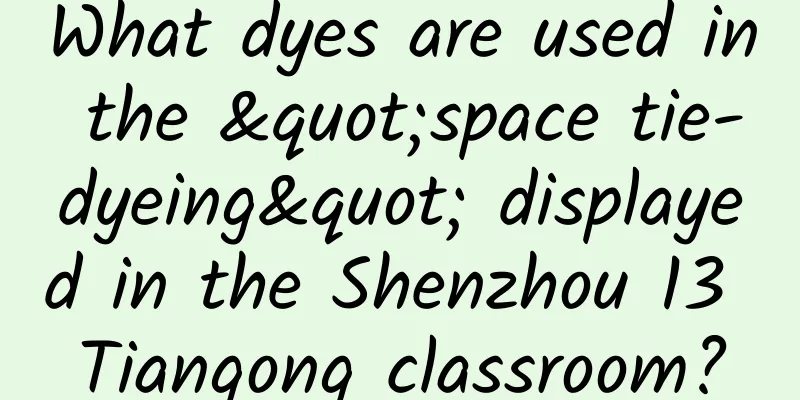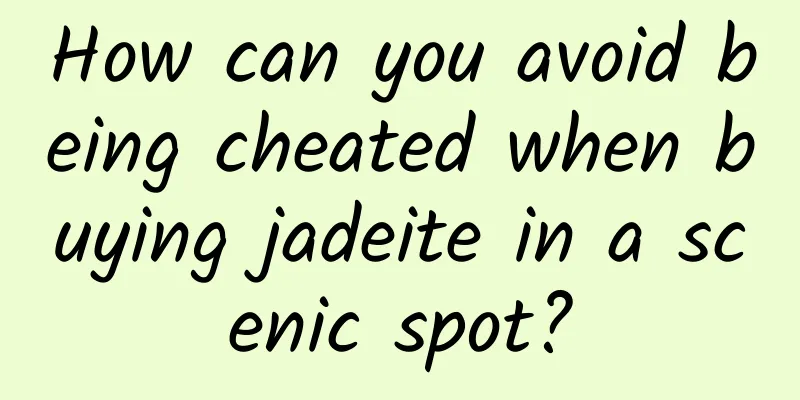What dyes are used in the "space tie-dyeing" displayed in the Shenzhou 13 Tiangong classroom?

|
On the afternoon of March 23, 2022, the Shenzhou 13 astronaut crew cooperated with each other to complete the second lesson of the Tiangong classroom. During the class, astronaut Wang Yaping demonstrated and explained my country's traditional and unique folk handicraft - tie-dyeing. Tie-dyeing has a long history and was already very mature in the Eastern Jin Dynasty. Tie-dyeing products were widely used in women's clothing during the Southern and Northern Dynasties, and tie-dyeing textiles were very popular during the Tang and Song Dynasties. In 2006, the tie-dyeing technique was approved by the State Council and selected as a national intangible cultural heritage. What dyes are used in tie-dyeing? Tie-dyeing with plant dyes has a long history in my country. Plant dyeing, also known as "plant dyeing", refers to a method of dyeing the dyed object by extracting pigments from various pigment-containing plants that grow naturally in nature. Plant dyes are usually obtained from pigments extracted from the roots, stems, leaves, flowers, fruits and juices of plants. They can be used to dye natural fibers and natural regenerated fiber textiles. This not only avoids the serious pollution caused by chemical dyes, but also conforms to modern people's natural, simple and environmentally friendly lifestyle. In the Book of Songs, the earliest collection of Chinese poetry, “Qingqing Zi Jin” and “Lü Yi Huang Shang”, Xunzi's "Encouragement to Study" says "The disciple surpasses the master". It describes the extraction and application of plant dyes. Because natural dyes contain different types of pigments, they can display a variety of colors. Although plant dyes have been passed down in my country for thousands of years, and the Qing Dynasty document "Xuehuan Embroidery Book" records more than 700 colors, in daily use, the plant dyes usually used are as follows: Blue dyes - indigo, woad, etc. Red dyes: madder, safflower, etc. Yellow dyes - Sophora japonica, turmeric, etc. Purple dyes - comfrey, perilla, etc. In addition, there are brown dyes (Dioscorea), black dyes (Gallanum chinense, Sumac), etc. Vegetable dyes are not only used for dyeing textiles, but are also commonly used for dyeing woven baskets. (Editor: Liu Dan) |
>>: Battle and coexistence between humans and viruses | Science Gallery
Recommend
Can you lose weight by not eating staple foods?
First of all, we need to know that the principle ...
Cracking the "mystery of time": Do you believe that time and space are an illusion?
Leviathan: According to the second law of thermod...
3 tips to teach you how to follow the hot spots correctly
There have been many hot events and festivals rec...
Analysis of Zhihu promotion methods
Zhihu’s mainstream promotion methods are mainly d...
10 things to note when increasing downloads of your startup app in the Apple Store!
This article is compiled from the sharing of Audi...
The number one vegetable in autumn and winter, why does it unite the stomachs of both the north and the south?
Stocking up on radishes means stocking up on the ...
Deep learning: preconceptions, limitations, and the future
I know it's a weird blog title to use a negat...
Who could be the real culprit behind the Beihai wounding incident?
A few days ago, at Qiaogang Beach in Guangxi, sev...
Apple App Store Investigation: Why Does It Ignore Comments on Illegal Information?
Many apps in the App Store are plagued by illegal...
I always feel like I'm going to be "yang", what should I do?
Recently, a new "unknown disease" - &qu...
“New wind” blows towards Chinese automobiles, and new forces emerge!
In ten years, China's automobile industry has...
Towards the clouds, the "towering giants" in the green kingdom
In the green kingdom of the earth, trees are like...
No one can write good copy by piling up buzzwords!
I once wrote a sentence on the packaging of my fa...
5 health care misunderstandings that deceived parents, you will regret it now
Our parents gave us life and everything good. Whe...
It turns out that there is such a big difference between snow accumulation and snowfall? | Expo Daily
It turns out there is such a big difference betwe...









![[Marketing Planet] Cross-border Marketing (Community Edition) Marketing Promotion Plan Collection Baidu Cloud Download](/upload/images/67cc2283a2296.webp)